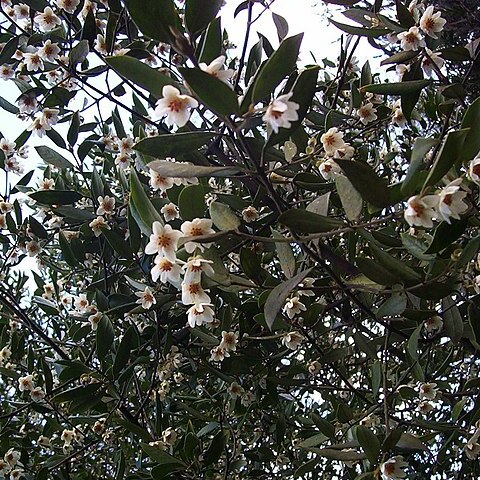A large tree. It grows to 45 m tall. Often it has a cone shaped crown with spreading drooping branches. Oil glands in the bark and leaves give a distinctive smell. The bark is white and grey and smooth. The leaves are oval or sword shaped. They taper to a point and have teeth along the edge. Leaves occur in pairs opposite one another. Leaves are green and shiny on top and pale underneath. They are 2-10 cm long by 1.5-2.5 cm wide. The flowers occur on the under side of branches and point downwards. Male and female flowers are often on separate trees. The flowers are 2 cm across. The fruit is dry and black and like a knob.


